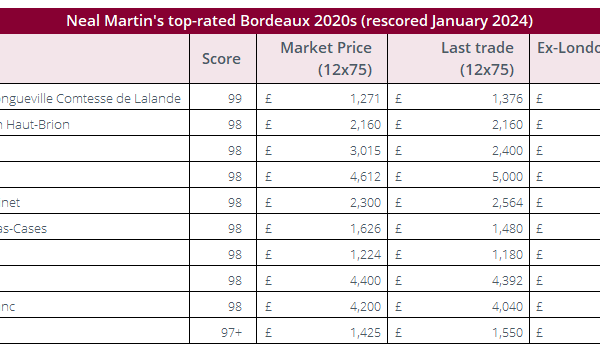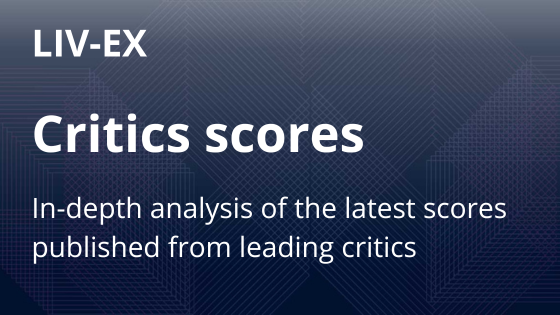Giovanni Geddes da Filicaja is the CEO of Ornellaia and Masseto. Liv-ex’s Sarah Phillips recently caught up with him to find out more about his work and views on the world of wine. In the first part of the interview, published below, Giovanni discusses business strategy, the fine wine market, and the relationship between Ornellaia and Masseto.
How did you get into the wine business? What brought you to Ornellaia e Masseto?
I didn’t go straight into wine. I started at an import company, then became involved in Remy Martin. So I was focused on spirits and Champagne rather than wine specifically. But I had always been interested in wine: my family had wine properties and land, though we didn’t produce commercially.
When I moved into wine – first to Antinori, then as a consultant, and then to Frescabaldi – I became more and more interested in the wine, particularly looking at where there were opportunities in Tuscany to produce some of the greatest wines in the world. I think Ornellaia and Masseto are now recognised as two of the great wines of the world, and they’ve grown a lot. Since I became CEO, the company’s revenue has increased six-fold.
Is this because of increased production?
It has been partly through increased production but mostly through adding value. Masseto’s increase is all about its value. The largest volume ever made by Masseto was in 1999 when we made 38,500 bottles. Now we produce around 30/32,000 bottles.
Ornellaia’s increase has been about both production and value.
How has the pricing of your wines evolved over time?
We don’t change our price according to the character of the vintage. Instead, we change it consistently with the market. We’ve never decreased the price, only gone up or remained stable. For example, our current release price is 3.5 times higher than of the 2001 vintage.
What if the market went down?
We have to be very careful with the volume that we want to put on the market. For all our Ornellaia wines. This means maintaining and building demand which is bigger than what we ship.
So take 2001 for instance. The economy wasn’t strong at all. The wines did not have the image they have today, and so I decided to hold back Ornellaia – about 30% – and sell it over the years, but not reduce the price.
In 2002 I reduced the quantity of Ornellaia. We produced a lot more of Le Serre Nuove, the second wine, but never reduced the price. We remained stable with the price until 2005, and then we moved on.
Is there a ceiling?
Masseto is a real collectable. With the current volumes – and it will stay at that volume – it will remain collectable.
Still, there is a lot more consumption than one might think because a lot of very wealthy people are drinking it. For them the prices aren’t too high, so we still find a lot of Masseto being sold in top restaurants.
If we look at price increases Masseto is up by about 50% in the USA over the past three years. Petrus has increased by about 10%. But Petrus is two thousand dollars; we are seven or eight hundred dollars – so there’s still a gap.
Ornellaia is produced in higher volumes. It keeps growing: the standard price now varies from $200-220. In restaurants it is very high – beyond $500 in top New York restaurants.
What happens to the Masseto grapes that don’t make it into Masseto?
The Masseto vineyard has an excellent capacity to produce perfect grapes, so we are talking about a very, very small portion of the grapes that don’t go in Masseto.
How did you go about defining the relationship between the two wines?
Strategically, my point was that Masseto would be a very different wine from Ornellaia, with a completely different label. It would be more expensive, with the opportunity to be the very top wine of Italy – and very international in terms of taste and positioning.
I didn’t want Masseto to compete with Ornellaia. I wanted Ornellaia to be the flagship of the estate, and Masseto to become an estate on its own. And in order to achieve that, I started by separating any activities like tastings and so on.
I changed the name of the company from Tenuta dell’Ornellaia to Ornellaia and Masseto. So when we bottle Ornellaia we use ‘bottled by Ornellaia’ and when bottling Masseto we use ‘bottled by Masseto’.
And how about distribution?
The next step was to separate distribution. From the 2006 vintage we started using La Place de Bordeaux, though we also have direct distribution in Italy, the United States and Canada.
Distribution to the rest of the world, with the exception of a very small allocation to Germany and Austria, goes through La Place, which has about 50% of the allocation.
The growth has been fantastic. I had followed Opus One – David Pearson [CEO of Opus One] is a very good friend. We discussed distribution on a number of occasions. La Place has done a fantastic job for Opus One’s wine, and it’s doing a fantastic job for us as well with Masseto.
What makes La Place so successful?
They have a lot of history, and this has given La Place knowledge of really good buyers – the top buyers of the world.
We have a different history in Italy – there is no comparable system, so we have had to market the brands on our own.
I don’t think that La Place could work as well with a wine that is not established already – they don’t have the means to promote it. However once the wine is established, they can do a fantastic job. Now, within say the first two to four days, they will sell something like 70% of the Masseto allocation.
By the end of November last year, 88% was sold. This was due to repeat demand from several customers – we have over four hundred customers buying from La Place nowadays.
Does it matter where – which countries – your wine is sold?
It does and it doesn’t. We try to spread out our distribution, but ultimately it ends up where the market demands, and that is fine.
La Place give us all the data – they tell us which countries they have sold the wine to, by country.
Has this changed in the past decade?
Yes it has, very much so. Asia is much more important than it used to be.
Bordeaux experienced problems from mid-2011. Demand from Asia had priced European buyers out of the market. When this demand died down, it was not possible to sustain prices…
About 15% of our sales are accounted for by Asia and this is very much concentrated in Hong Kong and China. This is a much smaller percentage than is sold in Italy. Europe as a whole is huge for us Germany, Switzerland and the UK in particular. We could sell more to the UK, but we limit it – otherwise half would go to the UK and then spread out around the world again. So it is quite balanced.
Do you ever offer older vintages direct from the estate?
This year we auctioned wines from the cellars of Ornellaia. These were wines that had never left the winery before, so we put them in slightly different packaging to indicate this – something that was particularly attractive to collectors. We sold them at three different auctions in New York, London and Hong Kong. The greatest success was in Hong Kong, then New York and then London.
Masseto and Ornellaia regularly trade on Liv-ex. What is your view on this?
I think it’s a good thing. It shows that there is demand.
[mc4wp_form id=”18204″]





